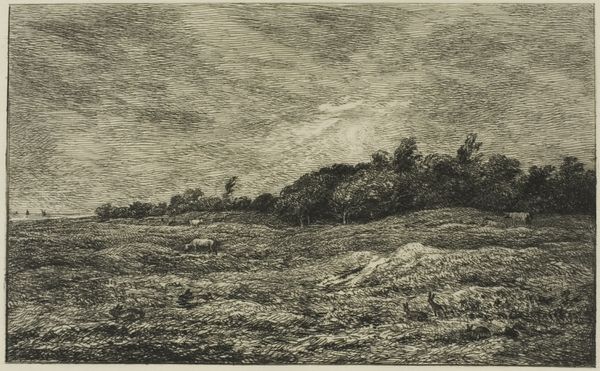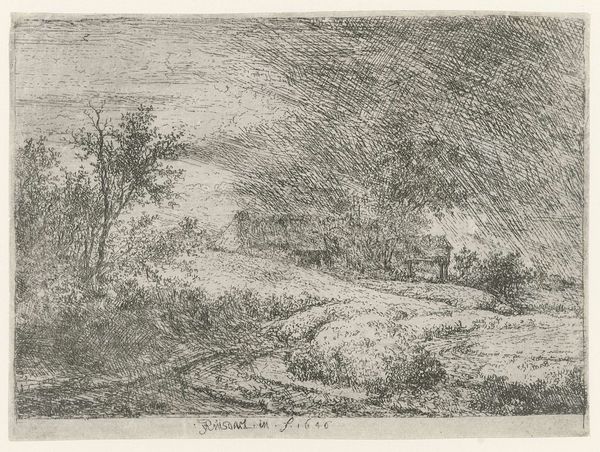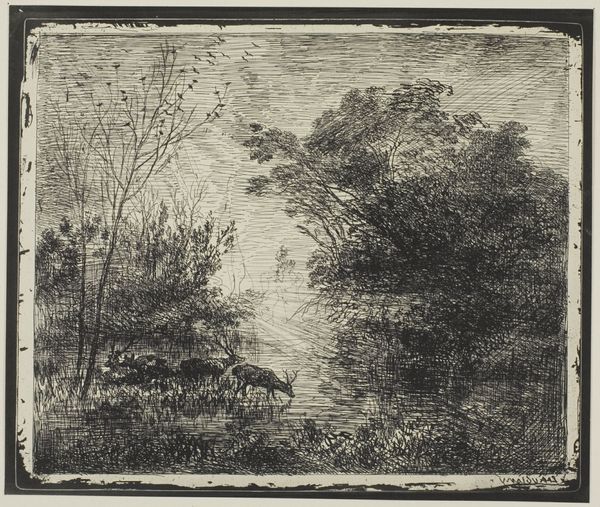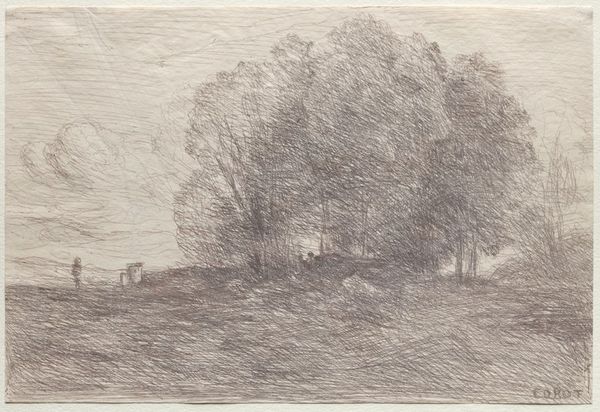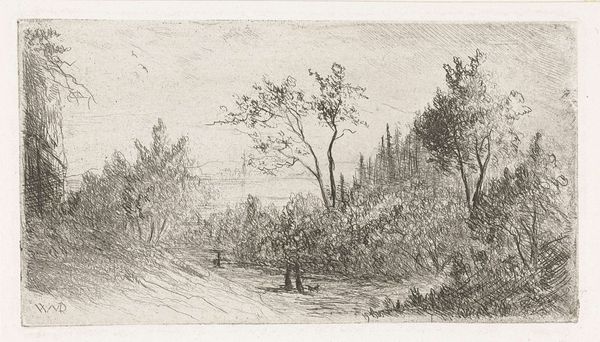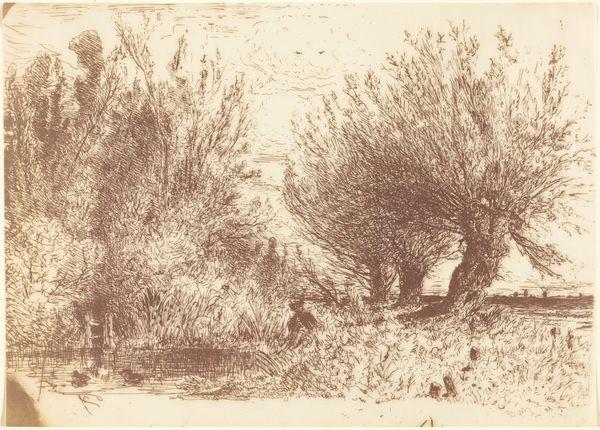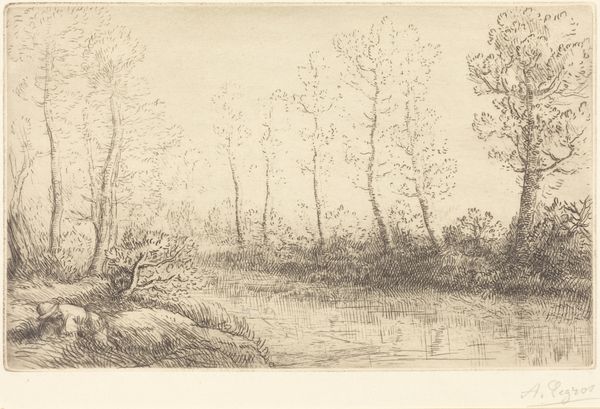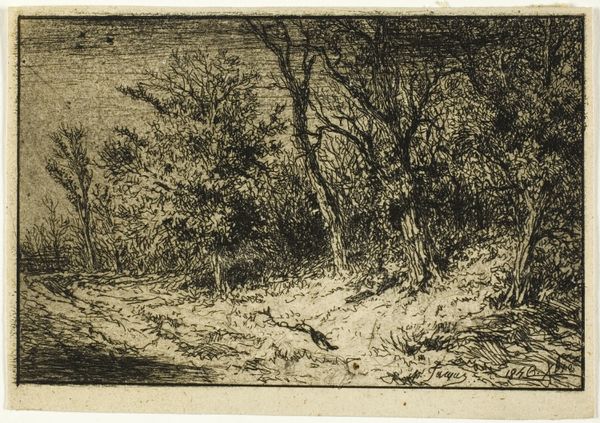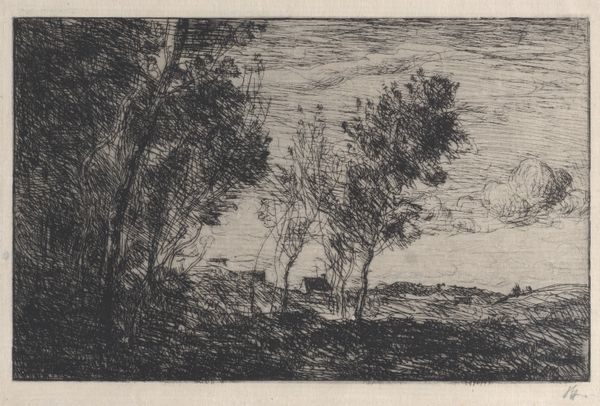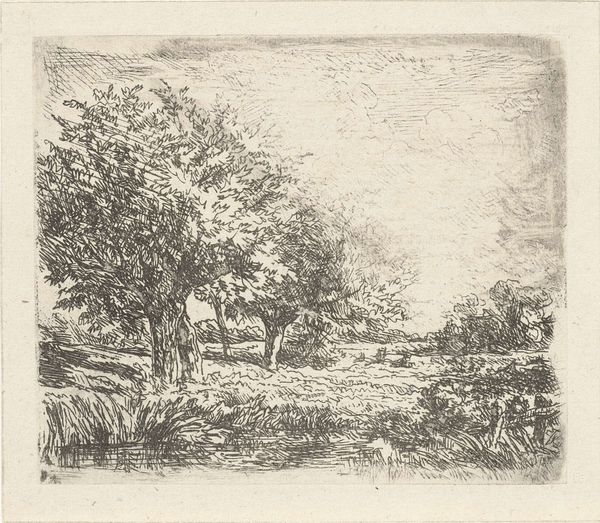
drawing, print, etching, paper
#
drawing
# print
#
etching
#
landscape
#
etching
#
paper
#
romanticism
#
realism
Dimensions: 74 × 126 mm (image); 90 × 139 mm (chine); 91 × 141 mm (plate); 151 × 195 mm (sheet)
Copyright: Public Domain
Editor: This etching, "Edge of a Wood, under Cloudy Sky" by Charles Jacque from 1846, is really striking! The landscape is filled with so much texture. What kind of a statement do you think he was trying to make? Curator: It’s important to consider the socio-political landscape of mid-19th century France. What artistic movements were gaining momentum? What role did the French Salon play in shaping artistic tastes? Editor: Realism and Romanticism were both influential, if that is what you are getting at? Curator: Precisely! Jacque, along with other artists of the time, were working to democratize art. The etching as a medium allowed for multiple reproductions, making art more accessible to the public. Think about it: how does this intimate portrayal of the natural world contrast with the grand historical paintings often favored by the elite Salon system? Editor: So, it’s a form of artistic rebellion almost? A shift in focus from the historical or mythical to the everyday? Curator: In a way, yes. Consider also how the Barbizon school influenced his choice of subject matter. He moved to rural France to represent a simpler life outside the city, and, with prints, to invite everyone into the woods. Editor: I see. He's not just depicting nature; he’s democratizing access to it, making it part of the public sphere through art. Curator: Exactly! It's not just about aesthetic beauty, but also about changing who gets to experience and own art. This adds layers to his chosen composition, technique, and his artistic goals. Editor: This has totally changed how I see the piece. It's a statement about accessibility and the public’s relationship with both art and the natural world, made accessible through printmaking. Curator: Indeed! It’s a reminder that art doesn’t exist in a vacuum, and neither should its audience.
Comments
No comments
Be the first to comment and join the conversation on the ultimate creative platform.
